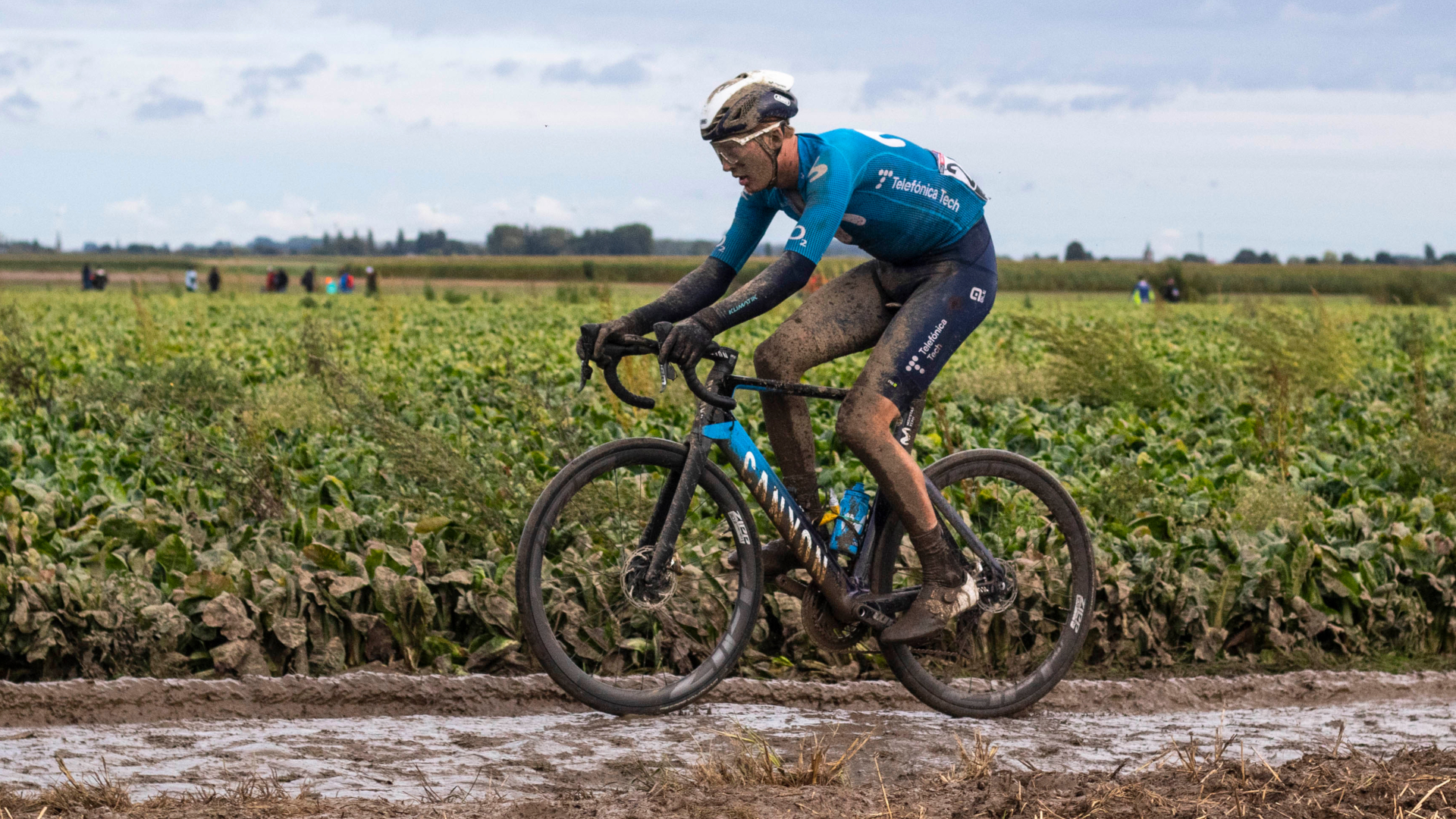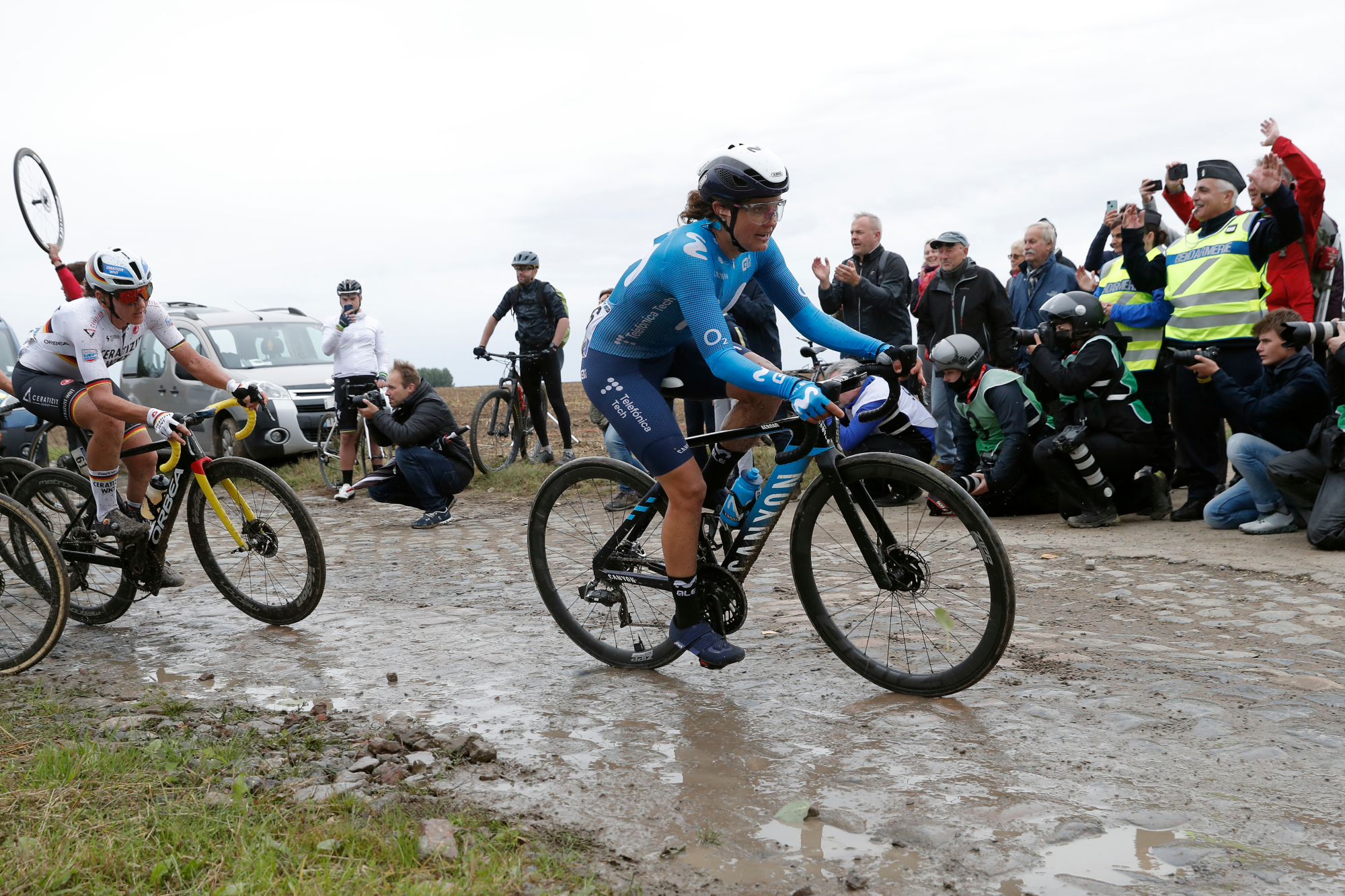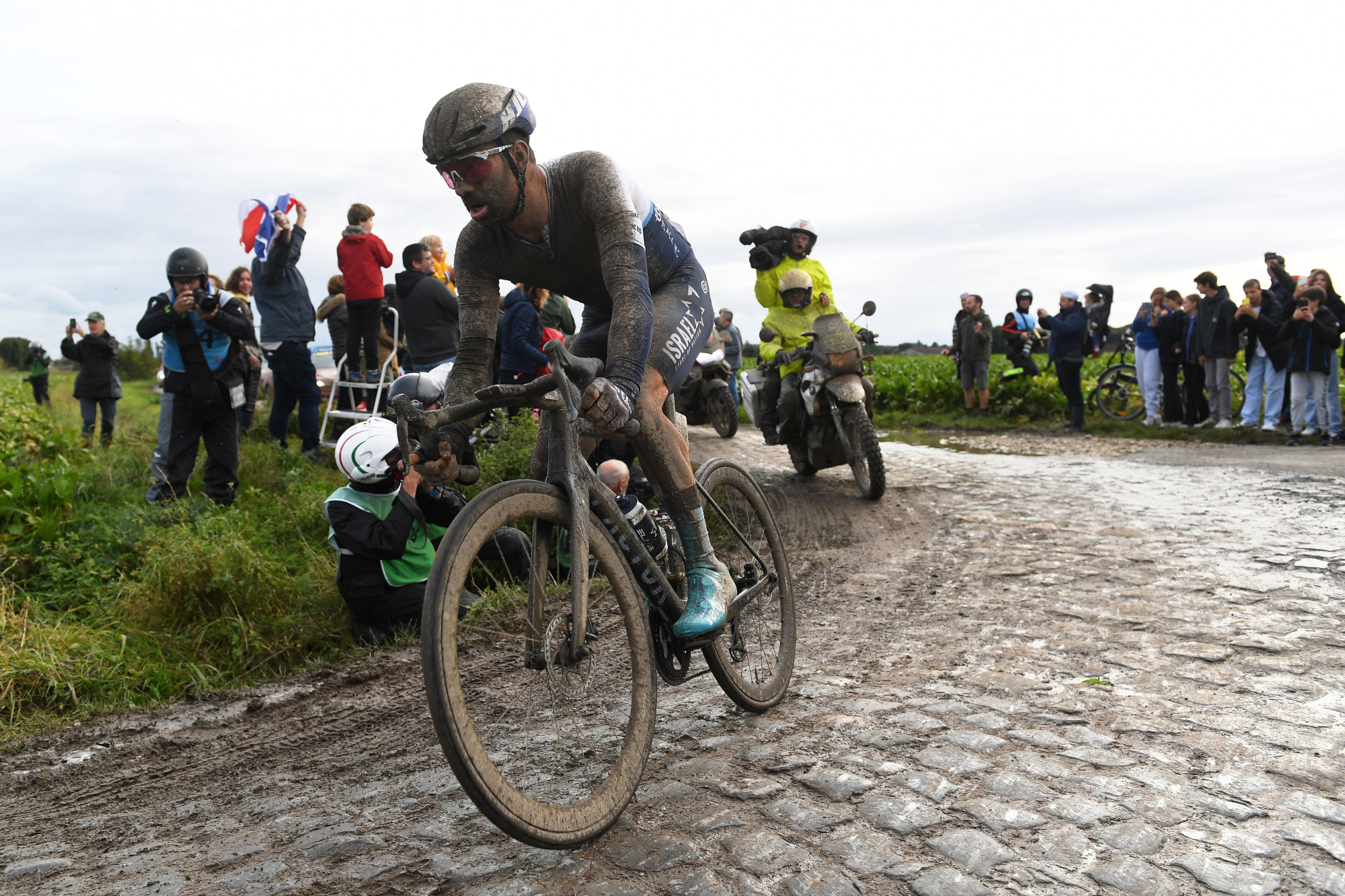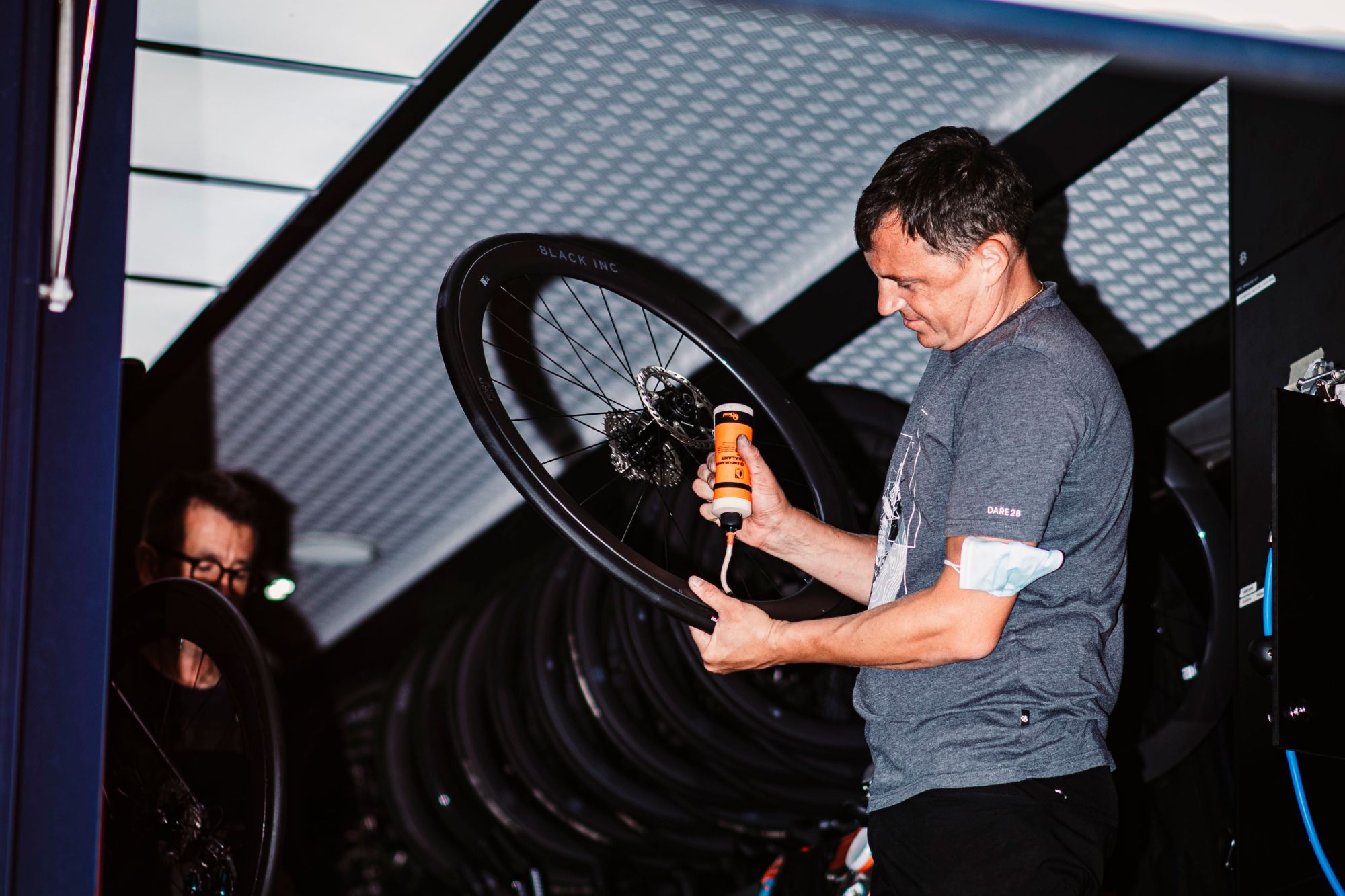Is the Paris-Roubaix tubular dead? Why tubeless tyres are winning on the cobbles
The unique challenges of the Hell of the North place much emphasis on wheel selection. We talk to two teams and two wheel manufacturers about solving the problem that is Roubaix

Last year’s Paris-Roubaix represented a watershed moment for tubeless technology at the WorldTour level. Both the winners of the men’s and women’s race, Sonny Colbrelli and Lizzie Deignan, did so riding tubeless set-ups. But it was the sheer number of riders who’d turned their backs on tubulars that really struck a chord.
Of all the Classics, Paris-Roubaix was seen as a true tubular stronghold. Due to the severity of the cobbled sectors the ability to ride them flat for longer distances paid extra dividends in a race where it's often difficult for team cars carrying spare bikes and wheels to reach their riders, making the switch to tubeless even more pronounced.
“When you look at Roubaix last year, everybody or everybody that mattered was on tubeless,” Zipp wheels product manager Bastien Donzé told Cycling Weekly. “And I think that was really one of the big takeaways of that day in October. While it wasn’t the first year that people used tubeless [at Paris-Roubaix], it was really where there was a massive switch from the majority of the racers to it.”
Ahead of this weekend's races, the sea change remains at high tide. The spring Classics and their varied and challenging terrains have continued to prove a fertile testing ground for teams. To date, tubeless appears to be winning the race. Tadej Pogačar at Strade Bianche, Matej Mohorič at Milan-San Remo, Biniam Girmay at Gent-Wevelgem, and most recently Mathieu van der Poel at the Tour of Flanders: all of these winners did so on tubeless set-ups.
“Given how conservative the pro peloton has been, I'd say the change is happening rather fast,” says Donzé when asked if it feels like it’s taken a while for the tubeless penny to drop.
“Lower pressure without the risk of punctures”: tubeless’ first win
Throughout the 20th century and well into the new millennium the peloton had been deeply wedded to tubulars. While other components of the bike changed, tubs remained a constant for professional bike racers; literally and figuratively the glue that bound them.
However, when Philippe Gilbert won Omloop Het Volk in 2008 on a tubeless set-up it suggested times were changing. The burgeoning technology, pioneered at the time by Hutchinson and Shimano, both sponsors of Gilbert’s then team, Française des Jeux, promised improvements in rolling resistance, grip and puncture protection. And while there was no intimation that the reign of tubulars was coming to end, in certain conditions, tubeless did appear to offer measurable benefits. Now one of the best Classics riders in the world had proved it.
The latest race content, interviews, features, reviews and expert buying guides, direct to your inbox!
“The trials have been very conclusive,” said Martial Gayant, then assistant team manager of FDJ. “The whole team was won over in training. You can ride at a lower pressure without the risk of punctures; this is truly an advantage in the spring races with their brutal sections of pavé to tackle.”
But following Gilbert’s milestone the floodgates remained shut. Despite Gayant's claims professional riders en masse were slow to embrace the new technology. Notoriously conservative, as Donzé stated, they tended to stick to the ‘if it ain’t broke’ school of thought. According to legend, when wider tyres started to gain prominence one unnamed French team asked its tyre manufacturers to label a delivery of 25mm tyres as 23mm so not to unduly worry its riders. Tubeless it seemed would instead have to proceed toward the peloton as a mere trickle.
And it did. Significant victories aboard tubeless tyres were slow coming. But eventually they came, including Alexander Kristoff’s win at Gent-Wevelgem in 2019 and EF-Education’s TTT triumph at the 2020 Tour of Colombia. To leisure cyclists who’d long since adopted the technology it seemed like scant progress. But from a racing perspective it suggested gathering momentum, albeit in small, incremental steps.
Finding your limit: testing tubeless at Roubaix
However, with the 119th edition of Paris-Roubaix just days away the changing landscape is now impossible to ignore. Perhaps there’s no better example of the shift in the peloton’s recent thinking than Alejandro Valverde’s second place at Strade Bianche in March, a result Zipp’s Donzé describes as “a big moment for us”.
The oldest man in the peloton tackled the steratto roads of Tuscany using a thoroughly modern approach; Zipp’s 353 NSW tubeless wheel on the front, its 454 NSW tubeless wheel on the rear, both hookless rims shod with 28mm Continental tyres run at 53.6 psi/3.7 bar and 55psi/3.8 bar respectively. Considering Valverde made his professional debut some five years before the first running of Strade Bianche in 2007, these are likely very unfamiliar numbers to the 41-year-old Spaniard.
When we asked his team, Movistar, if tubeless technology was the future of the sport they were adamant in their reply. “I will say it’s not the future, it’s the present,” a team representative told CW. “It’s still not a perfect system but it’s close to it.”
Movistar work closely with their sponsors Zipp and Continental in trialling tubeless set-ups. The team will make their final decisions for this year’s Paris-Roubaix during reconnaissance rides on April 13 and 14, telling CW it will be a choice between Zipp 303 Firecrest tubeless rims and Zipp 303 tubulars. Last year the entire team, both men and women, switched to tubeless tyres ahead of the race, 30mm on the front, 32mm on the rear, after a series of revealing training rides and tests on the notorious Troueé d’Arenberg sector of cobbles.
This five-star strip of pavé contributes plenty to both the myth and the reality that make the Hell of the North loved and feared in equal measure. It’s also a great place to test the merits of tubeless technology. Supported by Zipp engineers, two Movistar riders were tasked with measuring the team’s favoured tubular set-ups against Zipp’s latest tubeless wheels, the 303 Firecrest with 25mm internal rim widths, shod with 30mm Continental 5000 S TR tyres.
“We told them to do a first run with their tubular set-up at five bar, which is about like 73 psi. And then from there, go to the tubeless set-up,” says Donzé. “We asked them to start their first run at five bar, and then do more runs, lowering the pressure half a bar every time up until you get to the limits. And really the test was all about finding that limit, when are you going to start hitting rims and getting pinch flats. If you want to know what the limit is, you’ve got to go and find it.”
The results, according to the numbers released by Zipp, showed that the tubeless set-ups saved as much as 48 watts on runs of similar times. When power outputs were similar the riders were as much as 19 seconds faster over the same sector. When running the tubeless set-ups at the same or lower pressures subjective measures of comfort and grip were also greatly enhanced according to the riders’ feedback.
Given that Sunday’s men's race will feature 30 cobbled sectors, with several as long or longer than the Troueé d’Arenberg, which measures 2,400 metres, the potential significance of these savings is clear.

A question of surface: comfort a factor at Roubaix
Donzé described the results as an “eye opener” for Movistar. For the team at Zipp the results were as expected. After all, they’d been working on the impact of what they called “vibration loss” for years. Essentially it’s the power you lose from vibrations caused by bumpy and uneven road surfaces. Testing had led them to embrace the concept of wider tyres run at lower pressures, even if conventional thought had long told racing cyclists otherwise.
“So many of us have been conditioned to think that narrow tyres at higher pressures are better. That comfort is not a factor,” says Donzé “People think the faster they go, the narrower tyres they need. But it’s not a question of fast. It’s a question of what surface do you ride on?”.
At Roubaix that surface is distinctly mixed. Teams have long tried to find a balance that allows the riders to take the rough with the smooth, navigating the first 100km of asphalt as well as the 55km of pavé without compromising performance on either. Even with tubeless set-ups beginning to prevail in many other races, the increased pinch-flat protection alongside the ability to ride them flat as previously mentioned, had seen tubulars continue to dominate. Until last year that is. Testing, for some teams at least, was now suggesting that a tubeless set-up with optimised pressure for the specific rider could deliver improvements in both speed and comfort.
“It turns out comfort makes you fast,” says Donzé when asked about Zipp and Movistar’s testing ahead of the ‘21 race. “Having that suspension from wider tyres running at lower pressures isolates your bike and your body from all of those harmful vibrations from the road, and therefore allows you to have a much more linear motion when you travel, and that's how you save, not just a little, but a lot of watts.”
It’s assumed that comfort isn’t a hot topic in the professional ranks. After all, suffering isn’t written in bike racing’s small print, it’s the headline. The bikes are designed to maximise speed above all else, with riders hunched over the bars for hundreds of kilometres day in, day out. But riding just one sector of Roubaix pavé is an uncomfortable experience. Racing across the 30 sectors featured in Sunday’s race is nothing short of brutal, with extreme fatigue more pronounced than ever for the competitors.
“The feedback from the riders on grip and comfort showed that when you set lower pressures, you feel more comfortable,” says Donzé. “You feel more confident, you're less shaken, you can really go harder, and you have just more grip. So you just can focus on putting the power through the pedals on those hard sectors.”

The challenges of Roubaix: tubulars or tubeless on the pavé?
While it’s too early to sound the death knell for tubulars just yet it’s telling that Israel-Premier Tech, a team who’ve worked extensively with wheel partners Black Inc on developing a tubular rim designed solely for the unique challenges of Roubaix look likely, at least in part, to make the move to tubeless for this year’s race.
“We've been using the new Maxxis 28mm tubeless tyres in the Classics this spring,” Andreas Bäck Watt, Israel-Premier Tech head mechanic told CW this week. “Regarding Roubaix, we'll know for sure after the recon. The riders have been really happy with the tubeless and the mechanics are happy too. We've hardly had any wheel changes despite all the cobbled sections in the Classics.”
Bäck Watt also notes that the difference in rolling resistance between tubeless and tubulars has contributed to their success.
“The tubeless tyres have lower rolling resistance than tubulars and you can run them at lower pressure than tubulars, which is key on the cobbles for comfort and control,” he says. “It's a fine balance since there are still 200km of paved roads in Roubaix, so that's where the low rolling resistance, even at lower pressures comes into play."
The unique challenges that Roubaix presents continue to inform the team’s approach as they have done in the past. In 2019 Black Inc began developing a tubular rim profile for the race.
“On our ‘Roubaix’ tubular rims we have a special glue bed exclusively for use with 28-32mm tubulars designed to give superior sidewall support at the extremely low pressures used at the race,” Graham Shrive, engineering director at Factor and Black Inc, who equip WorldTour team Israel-Premier Tech, told CW. “The big challenge with Roubaix is having a rideable wheel for the first few hundred kilometres with relatively high-speed cornering putting large side loads on the tyres, in contrast with the later parts of the race where lower pressure is better.”
With this in mind the team have been experimenting with foam inserts and tubeless tyres, which Shrive calls “a game-changer” and were used by Trek-Segafredo with great success at last year’s Paris-Roubaix Femmes. Early reports from the team’s recon this week at Roubaix suggest that these inserts are providing a firmer feel for the riders when bottoming out on the pavé and during hard cornering. While the option to use 30mm tubulars on Sunday will still be there, Shrive says that “we may yet see tubeless on Black Inc wheels at this race.”
Shrive too notes the importance of reduced rolling resistance in the potential move from tubulars to tubeless at Roubaix as well as aerodynamic advantages, which is “due to the fit of the tyre sidewall to the rim and the decreased hysteresis on a tubeless set-up.”
The potential benefits of running tubeless don’t stop there either. “Another benefit may be giving the riders the ability to change their tyre choice at the last minute in case of rain or other changes,” Shrive says. Unlike tubulars that have to be prepared and glued well in advance, tubeless tyres can be swapped over with relative ease.
As Bäck Watt attested to Israel-Premier Tech have been riding tubeless during the earlier spring Classics, with riders using Black Inc’s 60mm and 45mm depth rims and Maxxis 28mm tyres. Black Inc is due to release a hookless rim too, which the team will be experimenting with throughout the calendar. Shrive anticipates that it likely won’t be long before Roubaix is the last race where tubulars are used in any numbers.
Ultimately, in a results-driven arena, it's success that will be the determining factor. As the body of evidence grows, the transition towards a tubeless peloton gains momentum. Even at a race like Paris-Roubaix where traditions run deep, another win on tubeless tyres will demand the attention of those riders who still remain sceptical of the benefits.

“Bike racers are pragmatic people”: selling tubeless to the riders
“We came into this really expecting there was going to be a lot of pushback,” says Donzé when asked about the Movistar riders' willingness to switch from tubulars. “But at the end of the day, bike racers are really pragmatic people. If you talk to them and say, ‘we're going to save you 40 watts’, they’ll listen. They're professional, they're there to win races, or do their best at races,” he continues. “While there’s still some reluctance, for the most part, we’ll show the riders the presentation, they do the testing, and then they're convinced.” Movistar confirmed this telling CW that “90% of the team are fully convinced about tubeless.”
The relationship between the product developers and the bike riders is perhaps overlooked when it comes to advancing new technologies at the professional level. But given the frequently mentioned conservatism of the peloton, it’s a vital component for the success of tubeless or any other development that manufacturers and sponsors believe is beneficial.
“Some riders are naturally more resistant to new technology,” says Shrive, “which applies to almost all new tech from aero bikes to electronic shifting. It’s always incumbent on us to explain new technology in a respectful fashion to riders that are hesitant.”
Both Black Inc and Zipp’s wheel gurus have also relied on rider experience to help spread the message. “We have some strong proponents of clinchers such as Chris Froome, who are working with those other riders to overcome their hesitation,” says Shrive. Donzé described the two Movistar riders who first trialled Zipp’s tubeless set-up on the Arenberg trench as “our best advocates.”
Given the number of riders set to ride tubeless configurations at Paris-Roubaix on Saturday and Sunday, and the volume of wins already achieved this year using the technology, it begs the question whether a rider can compete from the spring Classics through the Grand Tours and into the World Championships riding a tubeless set-up? Shrive believes that when it comes to certain races there’s still work to be done.
“At this point there is still some technology catch-up going on for specific races with extreme conditions, such as a mountain top finish or Roubaix,” he says. “From our side it’s the very, very low pressures that the riders use at Roubaix that will keep the tubular relevant because of its attachment to the rim. The foam inserts may change that story but they need to be proved first.”
The team at Zipp however appear to be more convinced that when it comes to tyre set-up for the peloton, there’s really only one choice.
“The short answer is we believe it makes sense everywhere, every time,” says Donzé “On any surface you’re going to be faster on tubeless.”
This weekend, across the famed cobbles of Northern France, we’ll get to find out.
Luke Friend has worked as a writer, editor and copywriter for over twenty five years. Across books, magazines and websites, he's covered a broad range of topics for a range of clients including Major League Baseball, Golf Digest, the National Trust and the NHS. He has an MA in Professional Writing from Falmouth University and is a qualified bicycle mechanic. He has been a cycling enthusiast from an early age, partly due to watching the Tour de France on TV. He's a keen follower of bike racing to this day as well as a regular road and gravel rider.